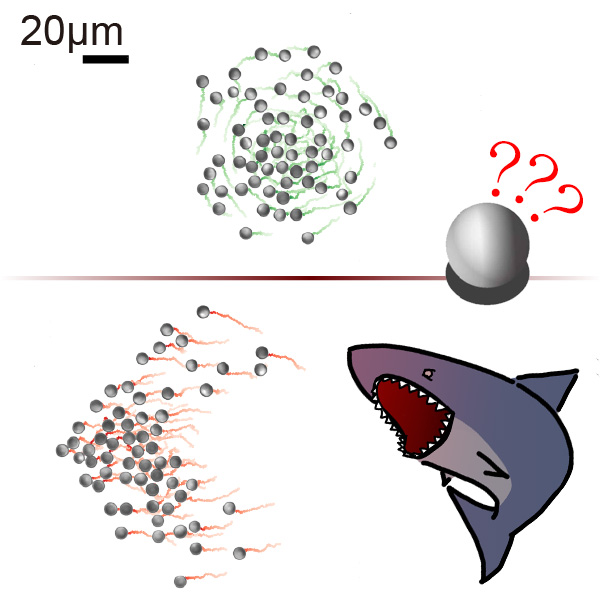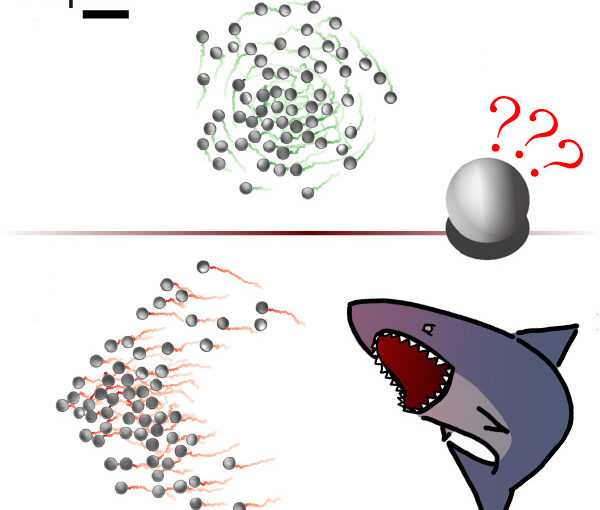
Chun-Jen Chen and Clemens Bechinger
New J. Phys. 24 033001 (2022)
doi: 10.1088/1367-2630/ac5374
repository: KOPS:56911
Many animal species organize within groups to achieve advantages compared to being isolated. Such advantages can be found e.g. in collective responses which are less prone to individual failures or noise and thus provide better group performance. Inspired by social animals, here we demonstrate with a swarm of microrobots made from programmable active colloidal particles (APs) that their escape from a hazardous area can originate from a cooperative group formation. As a consequence, the escape efficiency remains almost unchanged even when half of the APs are not responding to the threat. Our results not only confirm that incomplete or missing individual information in robotic swarms can be compensated by other group members but also suggest strategies to increase the responsiveness and fault-tolerance of robotic swarms when performing tasks in complex environments.
Press release at Universität Konstanz website:
How animal swarms respond to threats: With the help of microrobots, Konstanz physicists decode how swarms of animals respond effectively to danger [in English]

